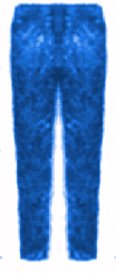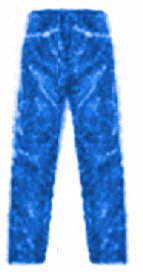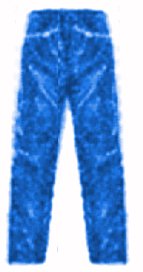 |  |
|
|
 |  |
|
|

Everybody knows what Jeans are or what they look like, but not many do know about the terms that concern these trousers. So first the "essential" terms:
Jeans
Long time before Levi Strauß made his first Jeans, the cloth for the overalls came from the Italian city of Genova, situated near the Côte d´Azur. The English adjective for things coming from this city -"genoese"- changed, as time had passed into the slang word "Jeans".
Blue Denim
After the fabric imported from Genova wasn´t used anymore for tayloring overalls, the socalled "Serge de Nîmes" was transported in great amounts from the French city of Nîmes to America. As these fabrics often had varying blue colour tones, Levi began to let them produce in America. In difference to this, some researchers say, Denim is a plain American invention, and Levi didn´t order his Denim from Nîmes but from Ameskoeg, New England, where it was woven like the "original" Denim. (Eine Arbeiterhose erobert die Welt, SZ) So the heavy 10 oz "Double X" fabric was "born" (the name relates to the weight per square yard; 1 oz is about 28.35 g). However, only real Blue Jeans are made of this extremely close and tight woven cotton. The upper side of this textile is more blue, whilst the down side is more white.
There are several different procedures of washing the produced Jeans, for making them ready for sale.
rinsewashed: The Jeans are short washed, what produces the typical dark blue colour of Jeans.
lightstone: Ready made Jeans are washed with bleaching agent in order to make the blue colour run out.
stonewashed: As the name predicts, the Jeans are treated with small stones while they are washed, so they look a little bit worn. Super stonewashed means the same, but the time of the wash is twice as long, what produces a lighter effect.
sandwashed: Under the use of a sandblasting equipment it is possible to get the effect of more used-looking Jeans (previously stonewashed) (prima Carina, S122ff)
The latest variety of making Jeans "ready to wear" is to shoot at them with a shotgun. These Jeans are sold together with the bullet that contained the small shot. In addition to this, Jeans are sold that have already been worn by real cowboys.
It is possible to differentiate four kinds of styles:
Superslim Fit(narrow formed, mainly made out of stretch fabric)
Regular Fit(straight formed, normal upper thigh waist)
Comfort Fit(comfortable upper thigh "area", normal foot waist)
Loose Fit(comfortable seat and upper thigh area, becoming narrow towards the feet)
The rivets
The copper rivets had been introduced, as the seams (though they were double- stitched) weren´t stable enough to hold the Jeans together. There hasn´t been produced a single Levi´s Jeans without them since 1872. As the rivets on the back pockets scratched everything you sat on (saddles, furniture,...), they were first covered with Denim and, after 1966, they were replaced by seams that were more stable.
The greatest number of pieces of cloth meet in the crotch of every Jeans. As this means that this is where the biggest tension is found, this place has been especially protected by a rivet. According to the legend that it burnt the private parts of some cowboys while sitting around the campfire, it has been removed around 1941. However, the applicated rivets are only original if they have "LS & CO. SF" on them.


